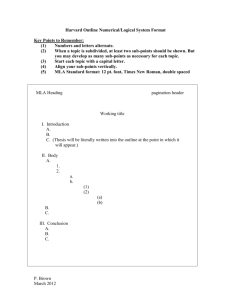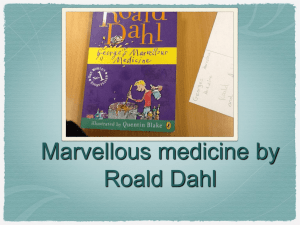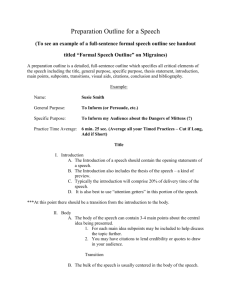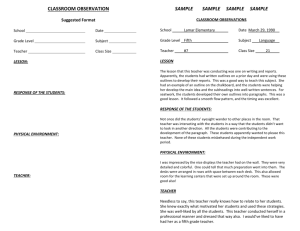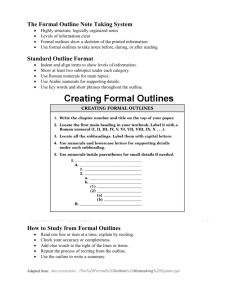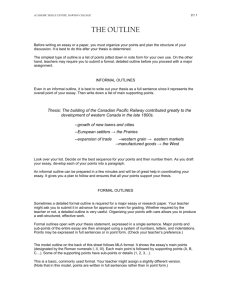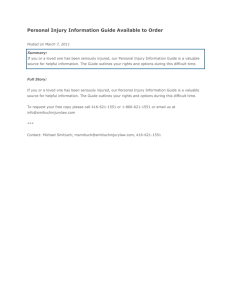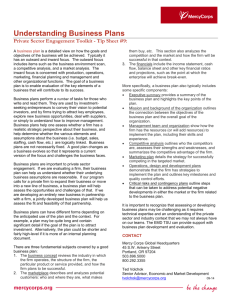Speech Outline Handout
advertisement
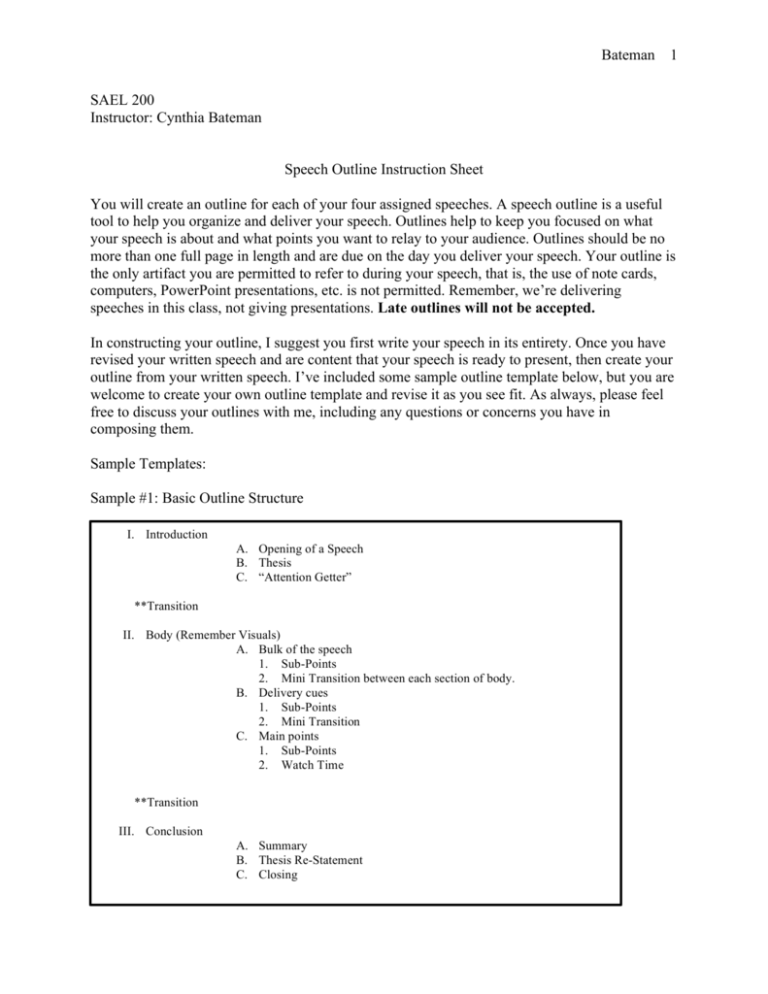
Bateman 1 SAEL 200 Instructor: Cynthia Bateman Speech Outline Instruction Sheet You will create an outline for each of your four assigned speeches. A speech outline is a useful tool to help you organize and deliver your speech. Outlines help to keep you focused on what your speech is about and what points you want to relay to your audience. Outlines should be no more than one full page in length and are due on the day you deliver your speech. Your outline is the only artifact you are permitted to refer to during your speech, that is, the use of note cards, computers, PowerPoint presentations, etc. is not permitted. Remember, we’re delivering speeches in this class, not giving presentations. Late outlines will not be accepted. In constructing your outline, I suggest you first write your speech in its entirety. Once you have revised your written speech and are content that your speech is ready to present, then create your outline from your written speech. I’ve included some sample outline template below, but you are welcome to create your own outline template and revise it as you see fit. As always, please feel free to discuss your outlines with me, including any questions or concerns you have in composing them. Sample Templates: Sample #1: Basic Outline Structure I. Introduction A. Opening of a Speech B. Thesis C. “Attention Getter” **Transition II. Body (Remember Visuals) A. Bulk of the speech 1. Sub-Points 2. Mini Transition between each section of body. B. Delivery cues 1. Sub-Points 2. Mini Transition C. Main points 1. Sub-Points 2. Watch Time **Transition III. Conclusion A. Summary B. Thesis Re-Statement C. Closing Bateman Sample #2: Key Word Structure 1. Introduction 1.1. key word(s): example–Grandma’s accident 1.2. key word(s): example–high healthcare costs 1.3. key word(s): example–Medicare reform 2. Main Points 2.1. key word(s): example–uninsured elderly stats 2.1.1. reminder: example–tell source of data 2.2. key word(s) 3. Summary of Claim(s) 3.1. key word(s) 3.2. key word(s) 3.2.1. reminder: example–return to Grandma’s story 4. Conclusion 4.1. key word(s): example–Grandma now 4.2. key word(s): example–effects of cost 4.3. key word(s): example–hope 2
